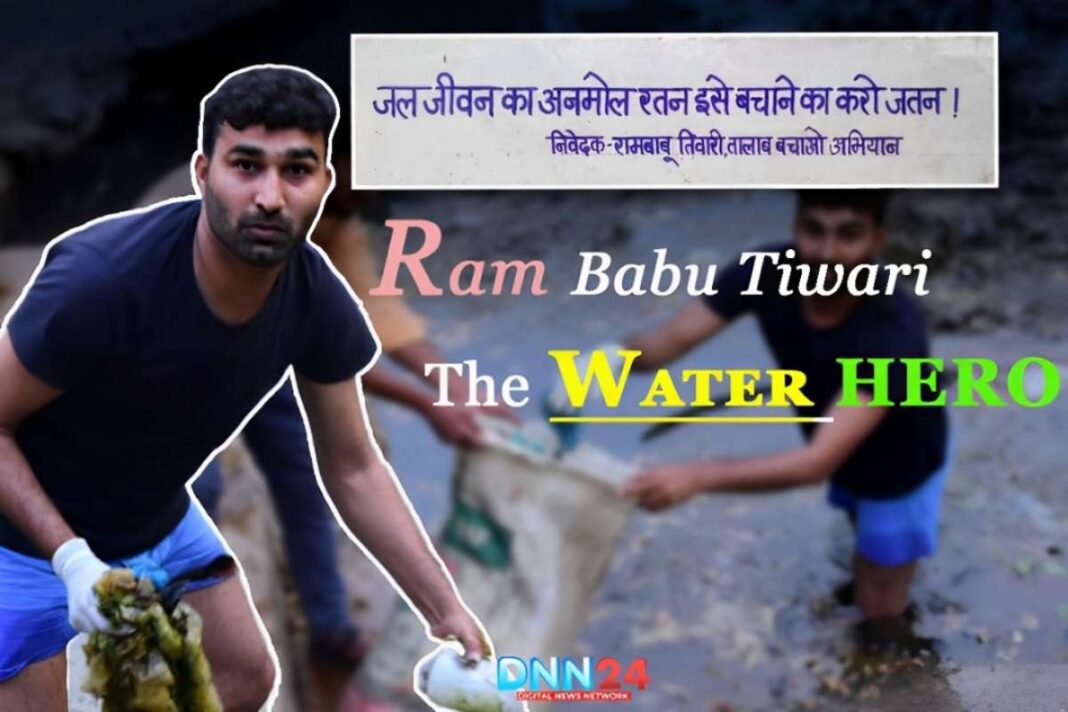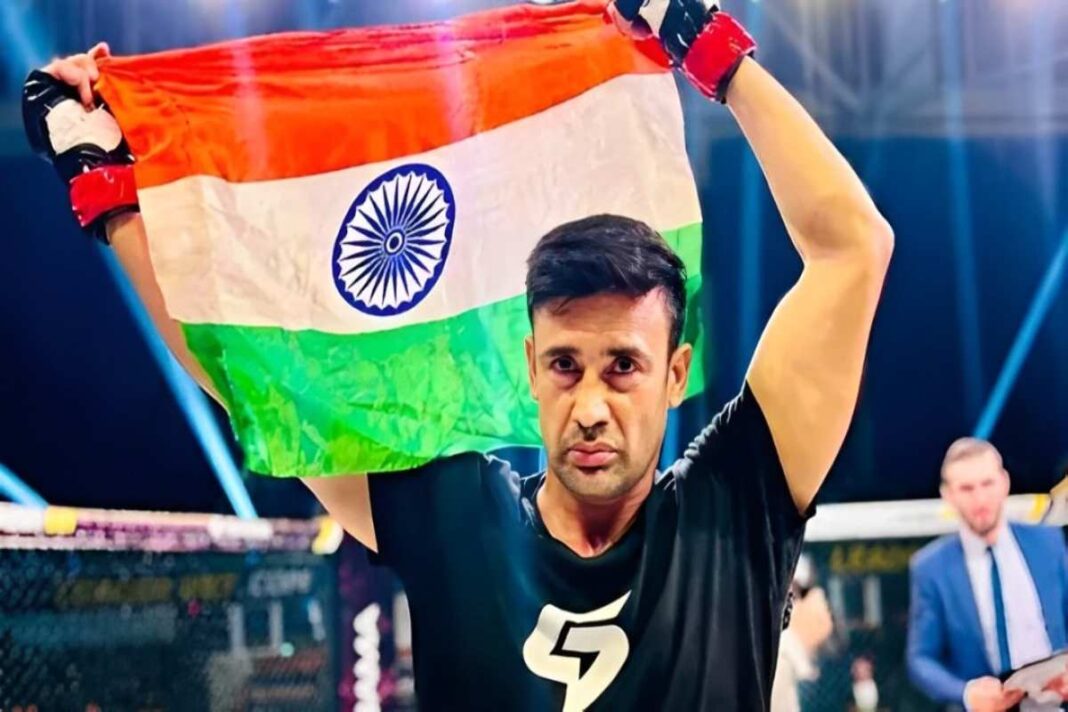In the dry lands of Bundelkhand, a place known for not having enough water, a young man named Ram Babu Tiwari has become a ray of hope. Ram Babu started working to solve the water problem in his homeland when he was just 17 years old. His hard work has not only changed his community but has also caught the attention of the whole country. Even Prime Minister Narendra Modi has talked about him in his ‘Mann Ki Baat’ program.
Ram Babu’s story has shown how simple but powerful ideas can change villages and inspire young people to save water. His work has taught us how important it is to save water and how much difference people can make when they work together.
What Made Ram Babu Start Saving Water?
Ram Babu’s journey to save water has started with what he has seen in his village every day. In Bundelkhand, not having enough water is normal. Ram Babu used to watch his mother and other women walk long distances every morning just to get water. This sight has stayed in his mind.
But the real eye-opener has come during a visit to Tarwani village for a funeral. It has been summer, and the village pond has dried up completely. Ram Babu has not been able to find water even to take a bath. This experience has shaken him deeply.
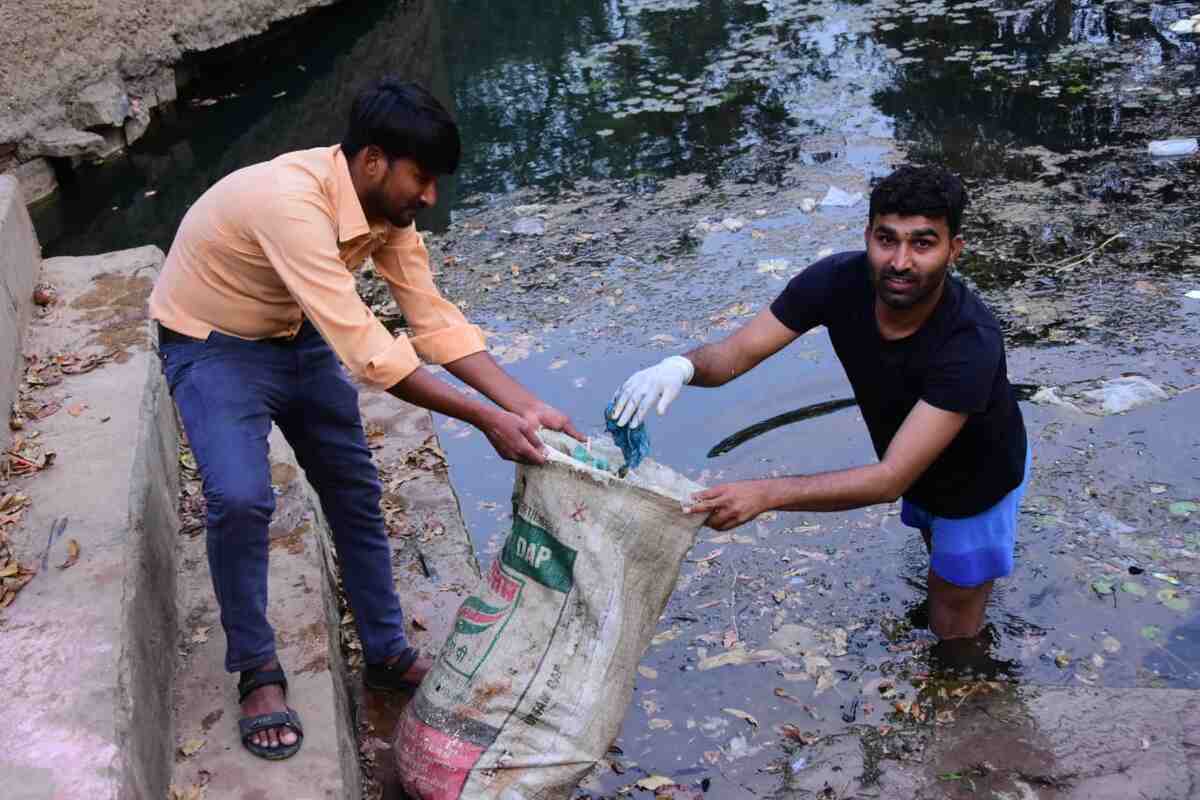
Later, when Ram Babu went to study at Allahabad University, he has seen a big difference. In the hostel, people have been wasting water without care. Taps have been left running while his village back home has been suffering from water shortage. This difference has caused him pain and has made him realize that with a little attention, people could save so much water.
These experiences have made Ram Babu understand how important saving water is. He has decided to do something about it. So, he has started organizing ‘Pani Chaupal’ with his friends and classmates. They have gathered and talked about the importance of saving water.
At first, people laughed at them. But slowly, some people have started joining them. They have taken an oath that they would stop wasting water. This small beginning has later turned into a big campaign.
Understanding the Water Problem in Bundelkhand
The water problem in Bundelkhand is not just about not having enough water. It’s a big problem with many reasons:
1. Uneven Rainfall: Bundelkhand gets a lot of rain, but only for three months. For the other nine months, there’s very little water.
2. Poor Water Management: The biggest problem is that rainwater isn’t stored properly. Most of it flows away and is wasted.
3. Forgotten Old Methods: In the past, every village has had many ponds to store water. But as times have changed, people have forgotten these old ways of saving water.
4. Changes in Farming: Farmers now use more chemical fertilizers instead of cow dung manure. This has made the soil less able to hold water.

5. Illegal Mining: Some people do illegal mining near water bodies. This has damaged the soil of ponds and has reduced the water level in rivers.
6. Growing Population: Villages that once have had 500 people and six ponds now have 2,500 people but fewer ponds.
7. Building on Water Bodies: People who don’t have land sometimes build houses near ponds. This has reduced the size of ponds.
8. Lack of Awareness: Many people don’t know much about saving water. They waste water without thinking about its long-term effects.
9. Climate Change: Global warming is changing weather patterns. This has made rainfall less predictable.
All these reasons have made the water crisis in Bundelkhand very serious. It has affected not just drinking water, but also farming and animal rearing, which are the main ways people earn their living.
‘Pani Chaupal’ and ‘Pani Panchayat’: Talking About Water
Ram Babu has started two important programs: ‘Pani Chaupal’ and ‘Pani Panchayat’. These programs have helped bring the community together and spread awareness about saving water.
Pani Chaupal is like a village meeting where people talk openly about water issues. It’s based on the old Indian tradition of ‘chaupal’, where people used to gather and share their thoughts. In Pani Chaupal, people discuss the water crisis, ways to save water, and how to manage local water sources. Everyone’s voice is heard here – farmers, women, and youth.

Pani Panchayat takes this discussion further. It’s an organized committee that makes plans for managing and saving village water. Pani Panchayat has elected members who represent different groups in the village. They make decisions on things like cleaning ponds, collecting rainwater, and using water properly.
The best thing about these programs is that they give power to local people. When people are directly involved in managing their water, they start feeling responsible. They begin to see the village ponds and wells as their own property and take care of them.
Bringing Ponds Back to Life: A Big Change
Bringing old ponds back to life has brought amazing changes to villages. It’s not just about having more water; it has changed the whole village life – socially, economically, and environmentally.
The most important change is that now there’s enough water in the village. Earlier, people had to walk for miles to get water in summer. Now, water is available right in the village. This has saved time and energy for villagers, especially women.
With ponds full of water, farmers can now water their fields better. They can grow two or three crops in a year instead of just one. This has increased their income. The areas around revived ponds have become green and beautiful. Birds and animals have returned.

Working together to revive ponds has united the village people. They now work as a team on other issues too. Apart from better farming, ponds have created new ways to earn money. Some people have started fish farming, while others are running small tourism businesses near the ponds.
The most important change is that reviving ponds has given people confidence. They now know they can solve their own problems. This has made village life better in many ways.
Challenges Faced and Overcome
Starting the pond revival work has not been easy. Ram Babu and his team have faced many challenges:
1. People’s Opposition: At first, when they have suggested building or reviving ponds, some people have been against it.
2. Lack of Money: They have not had much money, and no big organization has been supporting them.
3. No Technical Knowledge: They have not known much about how to build ponds properly. They have had to learn this.
4. Encroachment Problems: In many places, people have built on pond lands. Removing these structures has been a big challenge.
5. Lack of Water Awareness: Many people have not known much about why saving water is important.
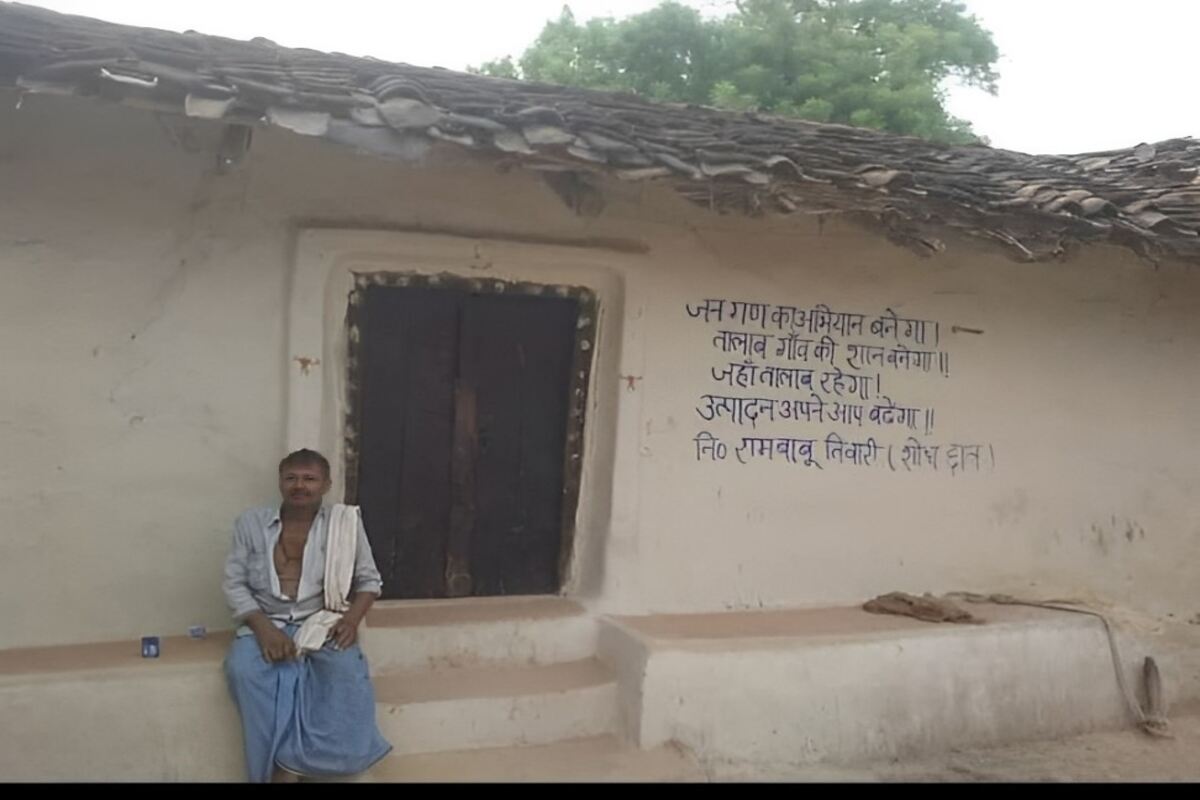
To deal with these challenges, they have used several strategies:
1. Continuous Talking: They have kept talking to people, explaining how ponds could make their lives better.
2. Starting Small: They have begun with small projects so people could see quick results.
3. Using Local Knowledge: They have asked old people about where ponds used to be and have used this information.
4. Government Schemes: They have used government programs like MGNREGA to get funds for pond construction.
5. Involving Young People: They have got youth involved in the work, which has brought new energy and ideas.
Slowly, people have started understanding why saving water is important, and they have joined the work.
‘Jal Mitra’ and National Recognition
Ram Babu has started the concept of “Jal Mitra” or “Friend of Water”. Jal Mitras are volunteers who actively work on water-related issues. These are people who care about water and want to work to save it. Jal Mitras spread awareness, manage ponds, solve water-related problems, and build networks with other water conservationists.
The mention of their work in Prime Minister Modi’s ‘Mann Ki Baat’ program has been a turning point for their water conservation campaign. It has given them national recognition and has changed how people see their work. This recognition has helped spread their message faster and has inspired more people to join the cause.
Ram Babu’s message to the youth about water conservation is simple – “Water is life, value it, save it.” He believes that young people can bring big changes. They have energy, enthusiasm, and new ideas. When they stand up for water conservation, they will not only protect the environment but also build a better, more sustainable future.
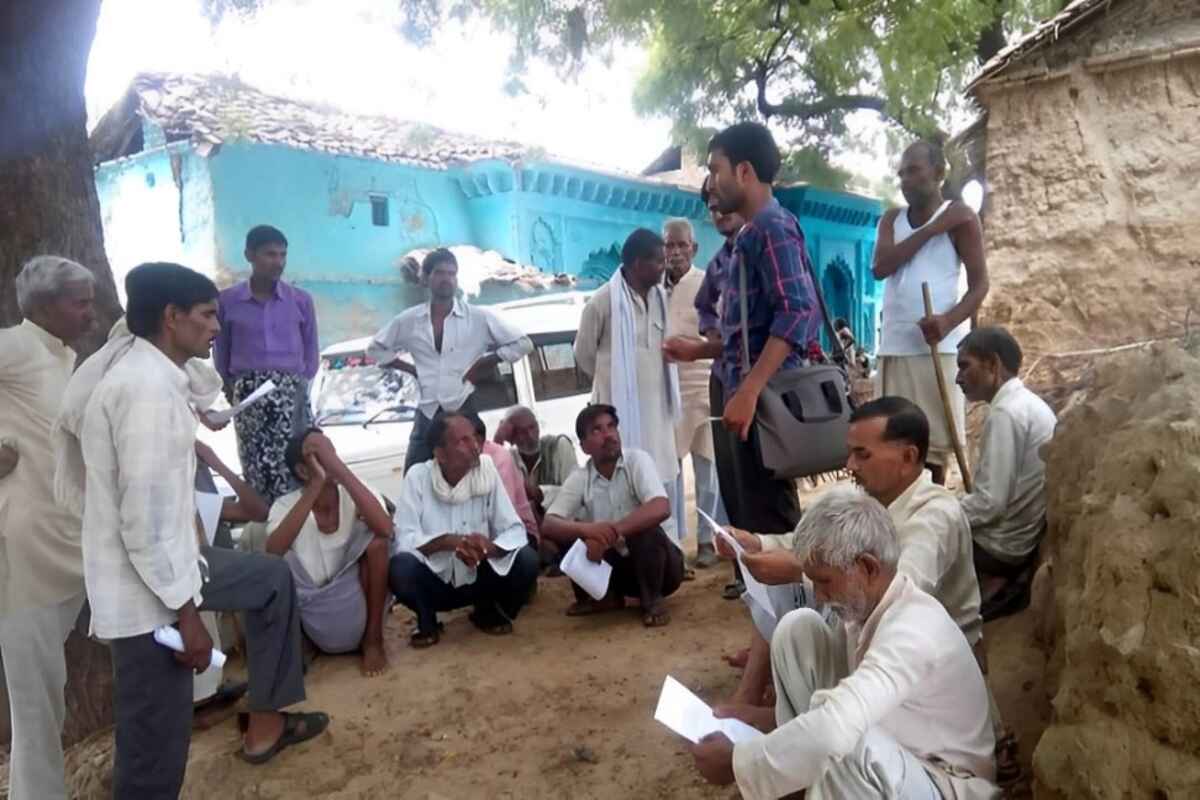
Ram Babu’s work has shown that even a small effort can bring big change. His principle of “Village’s water in the village, field’s water in the field” has become a powerful idea for water conservation. By focusing on storing rainwater, reviving old ponds, and building new ones, Ram Babu and his team have not only saved water but have also empowered communities.
The story of Ram Babu Tiwari and his water conservation efforts in Bundelkhand is an inspiring example of how dedication, community involvement, and simple yet effective ideas can solve big problems. It shows that when people come together and work with nature, they can overcome even the toughest challenges.
You can connect with DNN24 on Facebook, Twitter, and Instagram and subscribe to our YouTube channel.

